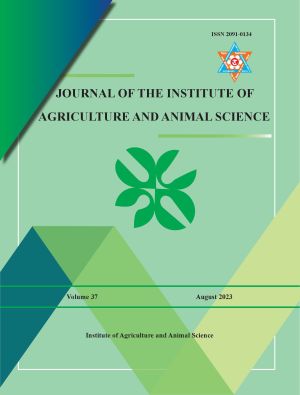Cropping Pattern, Production Status and Farmer’s Indigenous Practices of Local Crops in Humla District, Nepal
DOI:
https://doi.org/10.3126/jiaas.v37i1.56971Keywords:
cropping pattern, cropping practices, on-farm crop diversityAbstract
A study was carried out in the Humla district during 2078 B.S. to examine the local cropping pattern, production status, and indigenous practices of crops. To gather information, a semi-structured questionnaire was used to survey 52 households, and two focus group discussions were conducted. The study found that the major indigenous crops were summer crops that were sowed in the months of Baisakh and Jestha and harvested in Ashoj and Kartik. These crops required less water. On the other hand, winter season crops such as naked barley and wheat (pabai) required more than seven months for harvesting. Beans, buckwheat, potato, and finger millet were the major crops produced in the study area. Beans, buckwheat, and barley were cultivated by a higher number of households, while buckwheat, potato, and beans had high crop production. The majority of farmers practices a two-year crop rotation. Additionally, the study found that socio-economic factors such as gender, farmer’s age, caste, family size, and total crop production had a significant relation on maintaining on-farm crop diversity. The study concluded that local farmers in Humla district continue to rely on traditional practices for crop management, which are well-suited to the local agro-climatic conditions. However, it is necessary to give greater emphasis to increasing cropping intensity through the introduction of new technology and innovation, suitable crop management methods, and the protection of indigenous crops to enhance food security and agricultural sustainability in the region.
Downloads
Downloads
Published
How to Cite
Issue
Section
License
Copyright (c) 2023 Tribhuvan University Institute of Agriculture and Animal Science

This work is licensed under a Creative Commons Attribution-NonCommercial 4.0 International License.

